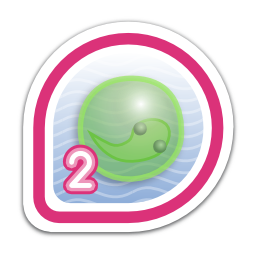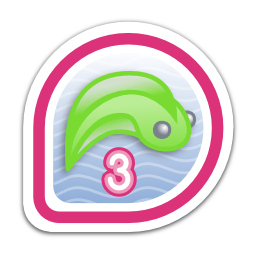From Netscape To Firefox: The Story Of Mozilla Firefox
Introduction
The history of Mozilla, upon which Firefox was built, extends all the way back to 1994, when the name was first established as a branding for the “mosaic killer,” Netscape Navigator. Mozilla as a modern day institution found its beginnings in 1998, when Netscape decided to release the source code of its dying browser to the open source community. Even later still, the browser that would become Firefox did not come into existence until 2002. In a sense, Firefox 1.0 came out in 2004 after 10 years of laying its foundations.
Origins
The origins of Firefox can be traced directly to Netscape, a company whose Web browser, Netscape Navigator, was the dominant browser before Microsoft developed Internet Explorer. The internal company name for the browser was Mozilla. Eventually, Netscape released the source code for Navigator under an open source license, meaning anyone could see and use the code. A nonprofit group was set up to direct the development of browsers using this code. This group became the Mozilla Foundation in 2003.
However, Firefox is not the browser the Mozilla group would have released if everything had gone as planned. Like Netscape Navigator before it, the Mozilla software was becoming bigger and bigger as more features were added in a problem in software development known as “feature creep” or “bloat”.
Around this time, the Firefox project was started as an experimental branch of the Mozilla project by Dave Hyatt, Joe Hewitt, Chanial and Blake Ross. Instead of accepting the feature creep, Blake Ross, (a computer enthusiast who first started helping out the Mozilla project as a hobby when he was 14) decided to start developing his own Mozilla based browser, focusing on a streamlined and simple version. Software developer Dave Hyatt also played a major role. Ross was joined by Ben Goodger in 2003, and development progressed rapidly from that point.
They believed that the commercial requirements of Netscape’s sponsorship and developer driven feature creep compromised the utility of the Mozilla browser. To combat this perceived software bloat[1] of the Mozilla Suite [2] they created a standalone browser, with which they intended to replace the Mozilla Suite. On April 3, 2003, the Mozilla Organization announced that they planned to change their focus from the Mozilla Suite to Firefox and Thunderbird.
Although the Mozilla Foundation had intended to make the Mozilla Suite obsolete and replace it with Firefox, the Foundation continued to maintain the suite until April 12, 2006 because it had many corporate users and was bundled with other software. The Mozilla community (as opposed to the Foundation) continues to release new versions of the suite, using the product name SeaMonkey to avoid confusion with the original Mozilla Suite.
On February 5, 2004, business and IT consulting company AMS categorized Mozilla Firefox (then known as Firebird) as a “Tier 1” (“Best of Breed”) open source product, considering it technically strong and virtually risk-free.
Naming
Phoenix:
The project which became Firefox started as an experimental branch of the Mozilla Suite called m/b (or mozilla/browser), underwent several name changes. After it had been sufficiently developed, binaries (experimental versions) for public testing appeared in September 2002 under the name Phoenix. The Phoenix name was kept until April 14, 2003, when it was changed because of a trademark dispute with the BIOS manufacturer, Phoenix Technologies (which produces a BIOS based browser called Phoenix FirstWare Connect).
Manticore:
The foundations of Phoenix progressed along an entirely different development mindset from its parent Mozilla. Instead of focusing on large application suites developed by large development teams headed by senior programmers, Phoenix centered around a small, core development team concentrated exclusively on the web browsing aspect of the Mozilla Suite. The ideas for these small volunteer projects had manifested themselves earlier with David Hyatt and Ben Goodger’s Manticore browser, built on Netscape and Internet Explorer using C# and .NET. However, where Manticore looked to offer basic browsing functions in a lean form factor, Blake Ross and David Hyatt’s Phoenix looked to innovate on the browsing experience, focusing on security and utility as the pillars of the new browser. Unconstrained by the business minded Netscape, Ross and Hyatt could develop a browser “completely focused on the end user.”
Firebird:
In April, 2003, Mozilla announced it would call its new browser “Firebird”a mythical creature sometimes considered synonymous with the phoenix, an immortal bird that regenerates itself through selfimmolation, to avoid the Phoenix conflict. The new name, Firebird, met with mixed reactions, particularly as the Firebird database server already carried the name. It provoked an intense response from the Firebird free database software project. In response, the Mozilla Foundation stated that the browser should always bear the name Mozilla Firebird to avoid confusion with the database software.
Confusingly enough, the sponsor of the Firebird database development group, went by the name of IBPhoenix (no relationship to Phoenix Technologies, which presented the initial trademark challenge to Mozilla). Formed in 1984 by InterBase Software and acquired by Borland Software in 1991, the group had launched the Firebird free database open source project in 2000.
Firefox:
Continuing pressure from the Firebird community forced another change, and on February 9, 2004 the project was renamed Mozilla Firefox (or Firefox for short). The name “Firefox” (a reference to the red panda [3]) was chosen for its similarity to “Firebird”, but also for its uniqueness in the computing industry. To ensure that no further name changes would be necessary, the Mozilla Foundation began the process of registering Firefox as a trademark with the United States Patent and Trademark Office in December 2003. This trademark process led to a delay of several months in the release of Firefox 0.8 when the foundation discovered that Firefox had already been registered as a trademark in the UK for Charlton Company software. The situation was resolved when the foundation was given a license to use Charlton’s European trademark.
Versions
The Firefox project went through many versions before 1.0 was released on November 9, 2004. After a series of stability and security fixes, the Mozilla Foundation released its first major update, Firefox version 1.5, on November 29, 2005. Version 2.0 was released on October 24,2006. Firefox 3.0 was released on June 17, 2008, with Version 3.5 and Version 3.6 released on June 30, 2009 and January 21, 2010 respectively. Version 4.0 was released on March 22, 2011. With Version 5.0 onwards the rapid release cycle was realized which envisions a new major version release every six weeks on Tuesday. Firefox 10, was released on January 31, 2012. The latest version, Firefox 10.0.2 was released on February 16, 2012
Key Terms
- Software bloat is a process whereby successive versions of a computer program include an increasing proportion of unnecessary features that are not used by end users, or generally use more system resources than necessary, while offering little or no benefit to its users.
- Mozilla Suite: Codenamed, internally referred to, and continued by the community as SeaMonkey, which integrated features such as IRC, mail and news, and WYSIWYG HTML editing into one software suite.
- A Firefox is another name for the red panda, a red-furred, endangered mammal related to the giant panda and found in the Himalayas, China and Myanmar.
References
- http://en.wikipedia.org/wiki/Firefox
- http://en.wikipedia.org/wiki/History_of_Firefox
- http://www.foxkeh.com/downloads/history/historyoriginal.pdf
- http://news.cnet.com/21001032_31000146.html
- http://web.archive.org/web/20070914035447/http://www.ibphoenix.com/main.nfs?a=ibphoenix&page=ibp_Mozilla0
- http://news.cnet.com/210073445156101.html
- http://www.zytrax.com/tech/web/firefoxhistory.html
- http://computer.howstuffworks.com/internet/basics/firefox1.htm
- http://wwwcsfaculty.stanford.edu/~eroberts/cs201/projects/firefoxmarketdynamics/
- http://www.andrewturnbull.net/mozilla/historyfx.html
Posted on March 12, 2012, in Mozilla and tagged ben goodger, firebird, firefox, internet, joe hewitt, manticore, mozilla, netscape, open source, open source license, phoenix, technology. Bookmark the permalink. 67 Comments.













































Thank you for keeping us updated. I really appreciate it and discover all of the facts extremely useful.
Thanks a lot!! 🙂
I have wanted to post something like this on my site and you have given me an idea. Cheers.
Ahighbloodpressurediet.com
Hello there, there is a layout issue or some thing to do with web browser compatibility having said that I thought I should post to notify you. The structure and layout look outstanding nonetheless
Thanks for reporting! 🙂
I’ll definitely look into it, but as far as I understand, it may be a browser problem, so you may try reporting the issue at the browser’s support pages..
I seldom leave a response, however after reading a bunch of comments on From Netscape To Firefox: The Story Of Mozilla Firefox Sayak Sarkar. I actually do have 2 questions for you if you do not mind. Is it simply me or do some of the responses look like they are left by brain dead folks? 😛 And, if you are writing on other online sites, I would like to follow anything fresh you have to post. Could you post a list of the complete urls of your shared pages like your Facebook page, twitter feed, or linkedin profile?
I glad you liked my post Ron. I hope to post some fresh articles as soon as I get some free time. Stay tuned till then. 😉
I got what you intend,bookmarked, very nice website.
Flight of the Netscape Navigator.
Cool post. Askin’ for more… 🙂
Just desire to say your article is as amazing. The clearness on your post is simply great and that i can suppose you’re an expert on this subject. Fine with your permission let me to take hold of your RSS feed to keep updated with imminent post. Thanks 1,000,000 and please continue the enjoyable work.
Thanks for your feedback Lucio. 🙂
You are always welcome to my RSS feeds, I’ll be updating the site soon, once I’m done with my current projects..
Very interesting info!Perfect just what I was looking for!
Cheers, I just stopped by to visit your website and thought I’d say thank you.
Good day! Do you use Twitter? I’d like to follow you if that would be ok. I’m undoubtedly enjoying your blog and look forward to new posts.
Great article! I loved the insight as well as the information given . Plus, your article writing style is very fun to read. If you have time kindly take a look at my brand new blog and let me know what you think.
Hey, I just stopped in to visit your blog and thought I’d say thanks for having me.
Magnificent goods from you, man. I have consider your stuff prior to and you are simply too magnificent. I actually like what you have bought right here, really like what you’re saying and the way in which during which you assert it. You are making it enjoyable and you continue to care for to stay it wise. I can’t wait to learn much more from you. That is really a wonderful web site.
Why does everybody love this subject so much? Im only kidding. I have a blog about it too.
I used to keep a journal on this subject. I need to find it. Great Post!!
love the blog, thanks for sharing your thoughts
I appreciate your wonderful words. awesome work. I hope you produce many. I will continue subscribing
Hey there! I know this is somewhat off topic but I was wondering which blog platform are you using for this site? I’m getting fed up of WordPress because I’ve had issues with hackers and I’m looking at alternatives for another platform. I would be great if you could point me in the direction of a good platform.
Thanks for an amazing post, may examine your others posts. i appreciate your thinking on this, I soon became somewhat made an impact to by this short article. Merit again! You make a good moment. Has great facts here. I believe that when more individuals thought of it like that, they’d possess a better moment in time have the grasp ofing the situation.
Fantastic article.Thanks Again. Much obliged.
Awesome blog you have here but I was wondering if you knew of any message boards that cover the same topics talked about in this article? I’d really love to be a part of online community where I can get comments from other knowledgeable individuals that share the same interest. If you have any recommendations, please let me know. Thanks!
Really appreciate you sharing this blog post. Want more.
I appreciate you sharing this blog article.Thanks Again. Awesome.
I really enjoyed this site, this is nice blog.
This is the suitable weblog for anyone who desires to seek out out about this topic. You understand a lot its nearly hard to argue with you (not that I truly would want…HaHa). You undoubtedly put a new spin on a subject thats been written about for years. Great stuff, just great!
Appreciate you sharing, great blog article.Really looking forward to read more. Much obliged.
I really enjoyed your blog! I put it in my favorites so I can come back again. I found it on Bing.
Aw, this was a really nice post. In thought I want to put in writing like this additionally – taking time and actual effort to make an excellent article… but what can I say… I procrastinate alot and certainly not seem to get something done.
Super share it is actually We have been awaiting for this tips.
salutations from across the sea. detailed blog I will return for more.
Very good blog.Really looking forward to read more.
Aw, this was a really nice post. In idea I would like to put in writing like this additionally – taking time and actual effort to make a very good article… but what can I say… I procrastinate alot and by no means seem to get something done.
From Netscape To Firefox: The Story Of Mozilla Firefox Sayak Sarkar Very nice post. I just stumbled upon your blog and wished to say that I’ve truly enjoyed browsing your blog posts. In any case I’ll be subscribing to your feed and I hope you write again very soon!
Thanks again for the blog post. Really Cool.
Wow, wonderful blog layout! How long have you been blogging for? you made blogging look easy. The overall look of your web site is fantastic, let alone the content!
Rather than produce exactly the same old content material you have taken this subject to a whole new level . Kudos for not following the standard writing crowd.
nice blog
As soon as I observed this website I went on reddit to share some of the love with them.
I really like your writing style, fantastic info, regards for posting :D. “I hate mankind, for I think myself one of the best of them, and I know how bad I am.” by Joseph Baretti.
Brilliant information here! Hopefully you wont stop the flow of such magical material!
Pingback: I installed Netscape on my Windows 8.1 PC
Pingback: Internet: Past and Present | internet42blog
Pingback: Fire Fox | Cpu In University
Pingback: The Foundation of Mozilla – Future Cameras
Pingback: Design in open source communities – Design is Political
Pingback: Mosaic’s birthday: 25 years of the modern web | “BOOKr” – BOOKr
Pingback: Mosaic's birthday: 25 years of the modern web - IT AND US
Pingback: Mosaic’s birthday: 25 years of the modern web – My Blog
Pingback: Mosaic’s birthday: 25 years of the modern web – blog
Pingback: Mosaic’s birthday: 25 years of the modern web | All About Tech in News
Pingback: Jeroboam Group | Mosaic’s birthday: 25 years of the modern web
Pingback: TelecomNews | Latest Telecom and Mobile Industry News, Information and Update: TelecomNews
Pingback: Mosaic turns 25: The beginning of the modern web | “BOOKr” – BOOKr
Pingback: Mosaic turns 25: The beginning of the modern web - Electrical Family
Pingback: JavaScript: How Did It Get So Popular? | Sakral Technology
Pingback: What is JavaScript? – Valerie Laughlin
Pingback: What is JavaScript? – JS Tigers
Pingback: JavaScript's shocking rise from the ashes of the browser wars on Command Line Heroes - Arwebhosting Blog
Pingback: Javascript: How did it get so popular? – .:tecraft:.
Pingback: Is JavaScript The Hottest Thing For This Decade? - GraphicDon
Pingback: How Did JavaScript Get So Popular? - IT EXAM TOOLS
Pingback: What is JavaScript? – JS Tigers